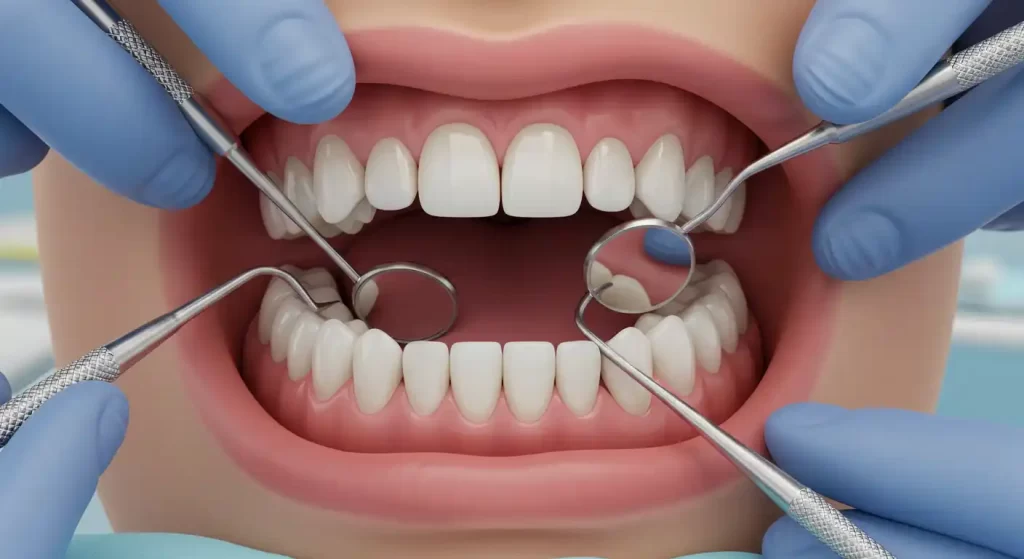Dental Bridge
Dental bridge is a treatment method that restores the chewing function. This treatment is one of the fixed prosthetic options applied to replace missing teeth. In practice, the healthy teeth on both sides of the missing tooth gap are reduced and used as abutments. Afterwards, the bridge prosthesis is placed. The purpose of this procedure is not only to improve the aesthetic appearance but also to prevent the deterioration of the jaw structure.
Dental bridge treatment stands out with its aesthetic and functional benefits. This treatment is very important for maintaining oral health. Once applied, the load balance of the teeth during chewing is preserved. Tooth shifts that may occur due to gaps between teeth are prevented. This method also helps to correct speech disorders and support facial contours. With proper oral care after the procedure, it can be used for a long time.
Dental Bridge Prices
constructed. For example, there is a significant price difference between a 3-unit dental bridge and a 4-unit dental bridge. The type of material to be used is also important in pricing. Metal-supported porcelain, full ceramic, or zirconia bridge options affect the overall cost.
The factors influencing cost in bridge treatment are as follows:
- The number of missing teeth and how many units the bridge will consist of
- The type of material selected for treatment
- Laboratory fees
- Additional procedures required before treatment (e.g., tooth extraction, root canal treatment, gum treatment)
- The experience and expertise level of the dentist performing the treatment
The combination of all these factors directly affects the total cost. Therefore, pricing becomes clear only after the examination.
A bridge is a treatment method applied to eliminate tooth deficiencies and offers advantages both functionally and aesthetically. After treatment, patients can chew more comfortably. It can also correct speech disorders.
Although prices for treatment may seem high, it is considered a cost-effective solution because of its long lifespan.

How is a Dental Bridge Made?
The dental bridge applied to replace missing teeth is one of the fixed prosthesis types. The purpose of this method is to restore both chewing function and aesthetics.
The first step in treatment planning is a detailed examination of the patient’s oral structure. Accordingly, the dentist evaluates the condition of the natural teeth adjacent to the missing tooth. When these teeth are sufficiently strong and healthy, they are prepared as suitable abutments for the bridge. During the procedure, the teeth are reduced to a certain extent and made suitable for crowns.
The stages of the treatment process are as follows:
- After the initial examination, the dentist takes X-rays and details the treatment plan.
- The abutment teeth are shaped under local anesthesia.
- A precise impression is taken from the mouth and sent to the laboratory.
- A temporary bridge is placed to protect the teeth.
- The permanent bridge is tried in, and adjustments are made if necessary.
- Once compatibility is ensured, the dental bridge is permanently cemented.
After treatment, it is important to pay attention to oral hygiene. Daily brushing, interdental brush use, and flossing should be performed regularly to clean under the bridge. Otherwise, gum inflammation and cavities may occur, shortening the lifespan of the bridge. With regular care, dental bridges can be used for many years without problems.
How Long Does a Dental Bridge Last?
The durability of dental bridges varies depending on many factors, so this period differs for each patient.
The average lifespan after this treatment is around 10–15 years, but with proper care, there are cases exceeding 20 years. The most important factor in ensuring long-term use is keeping the abutment teeth healthy and preventing gum inflammation.
The choice of material is another factor that affects durability. Zirconia bridges stand out for their high strength and natural appearance and are widely preferred. Metal-supported porcelain bridges can be chosen as a more affordable option. When making a selection, chewing force, aesthetic expectations, and budget should be taken into account.
One of the factors determining the bridge’s lifespan is eating habits. Cracking hard nuts with teeth or trying to open bottle caps with teeth can damage the bridge. Developing softer and more balanced eating habits after treatment reduces the risk of fracture.
Today, although zirconia, full ceramic, and metal-supported porcelain options are available, traditional bridge applications are still widely preferred. A traditional bridge has a structure fixed on two strong abutment teeth. This method is a durable and reliable solution. Proper preparation of abutment teeth and designing the bridge to withstand chewing forces are key points for long-lasting use.

Reviews of Patients Who Had a Dental Bridge
Patient experiences in dental bridge treatment reveal how effective the treatment is aesthetically and functionally. Patients who had long-term tooth gaps report that they can chew more comfortably after treatment and that their self-confidence has returned. People who had difficulty eating or even speaking state that these problems were largely resolved with this method.
One of the frequently emphasized points after treatment is the compatibility of the bridge with natural teeth and its aesthetic appearance. When bridges are made in a color matching the natural teeth, it is possible to maintain the natural look of the smile. Some patients experience mild sensitivity in the first days after treatment, but this disappears within a few weeks. Patients report that regaining balance during chewing also facilitates digestion.
The adaptation process after treatment varies from person to person. Although some people experience slight difficulty in speaking or biting in the early days, this is a temporary situation. The condition of the bridge should be monitored with regular check-ups, and minor adjustments should be made if necessary.
Positive experiences after treatment depend on patients following the recommended oral care routine and attending regular dental check-ups. When these recommendations are applied consistently, it is possible to use dental bridges without problems for many years.
You can contact Elşen Yusufoğlu’s clinic for detailed information about dental bridge treatment and its application methods.
